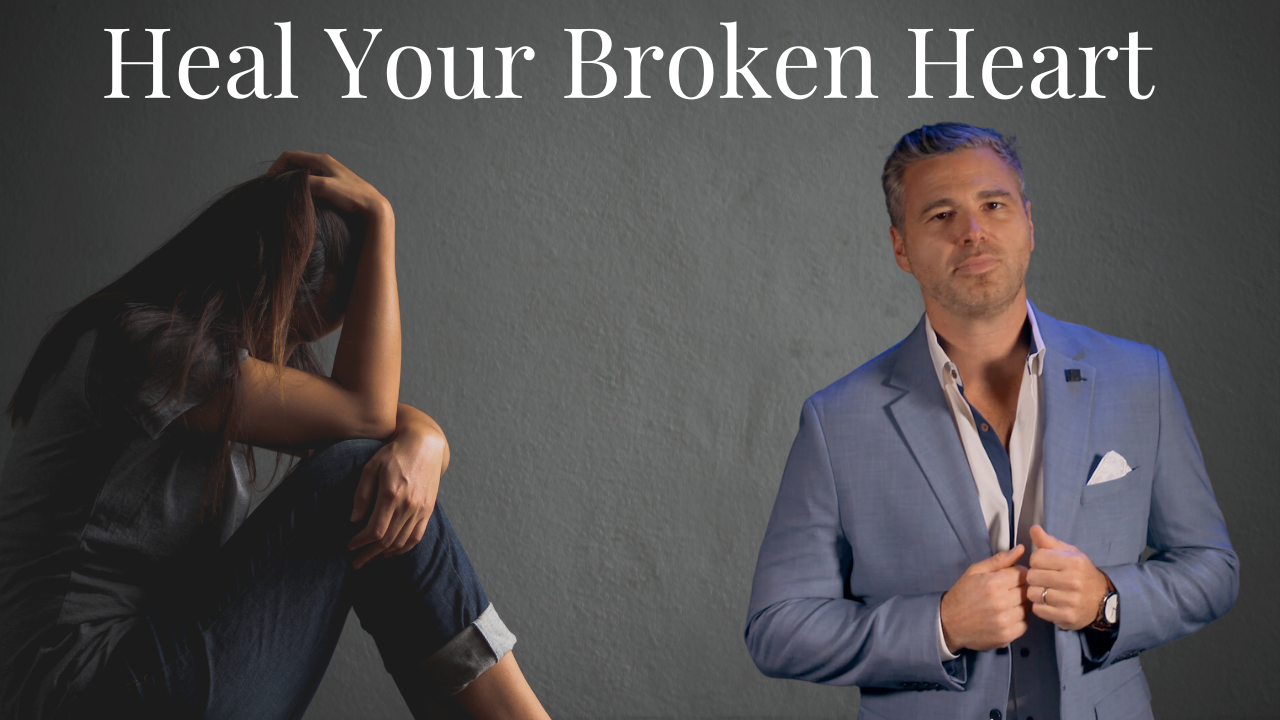Notes from the podcast:
Endings are hard. The conclusion of a relationship, whether it fizzles out or comes to a sudden halt, brings a wave of emotions that can leave us feeling lost, lonely, and engulfed in pain. The ache of loss can feel unbearable, prompting a desperate search for a way to make it stop. Yet, the journey through heartache is not about clinging to familiar suggestions or remedies but embracing a new perspective that promises healing and growth.
The Pain of Loss
We often find ourselves adrift in a sea of emotions when a relationship ends. Feelings of sadness, depression, and a profound sense of being alone can overwhelm us. The loss shakes the very foundation of our identity, leaving us questioning who we are without the other person. It’s a moment when everything seems unclear, and the future lacks purpose or direction.
A Promise of Healing
In this exploration, we delve into specific strategies to heal your heart, offering insights and guidance that are unique and previously unshared. The journey of healing invites us to view our experience through a different lens, one that transforms pain into a stepping stone towards a brighter, more fulfilled future.
Seeing It For What It Was
Embracing Reality
The initial step in healing is confronting the reality of the situation. It’s natural to be in denial, unwilling to accept that the relationship has ended. Many find themselves playing detective, searching for clues or explanations that might offer a semblance of hope. However, fixating on specific reasons for the breakup is a mirage; it obscures the bigger picture.
Understanding Closure
Closure comes from recognizing that the end of the relationship was not a decision made lightly. It was a necessary step, signaling that the relationship, despite its moments, was not meant to last. Accepting that great relationships rarely fail but bad ones do — and should — is crucial. This understanding paves the way for acknowledging our role in the relationship and the importance of aligning with a partner who truly complements us.
Seeing It For What It Can Be
The Power of Reframing
Viewing the end of a relationship as a lesson rather than a loss opens up a world of possibilities. This perspective encourages us to find gratitude in rejection and to see our experiences as opportunities for growth and self-improvement. Embracing the present moment, even in pain, can transform our lives, guiding us toward becoming better versions of ourselves and, eventually, finding a partner truly suited for us.
Your Time to Shine
Editor’s note: Ready to attract love with a proven strategy? Watch this free video to learn the 7 powerful steps
Embrace Being Happily Single
The period following a breakup is a time for self-discovery and reinvention. Rediscovering who you were before the relationship and exploring new interests and hobbies can be incredibly liberating. This is a time to invest in yourself through physical activities, learning new skills, or simply updating your style. It’s an opportunity to reset and start anew, guided by the insights gained from your past experiences.
Take the Time You Need
The Importance of Patience
Healing is not instantaneous. It requires patience, intentionality, and time, like climbing out of a deep hole. Progress should be measured not by the absence of pain but by the reduction of it. Rushing into new relationships or seeking quick fixes often leads to repeating past mistakes. True healing allows for developing new, healthier relationships built on the lessons learned from past experiences.
Conclusion
While painful, the end of a relationship offers a unique opportunity for personal growth and self-discovery. By seeing the situation for what it was and can be, embracing the chance to reset, and allowing ourselves the time to heal, we can emerge stronger, more resilient, and ready for the love we truly deserve. The journey through heartache is not easy, but patience and a new perspective can lead to a brighter, more fulfilling future.




